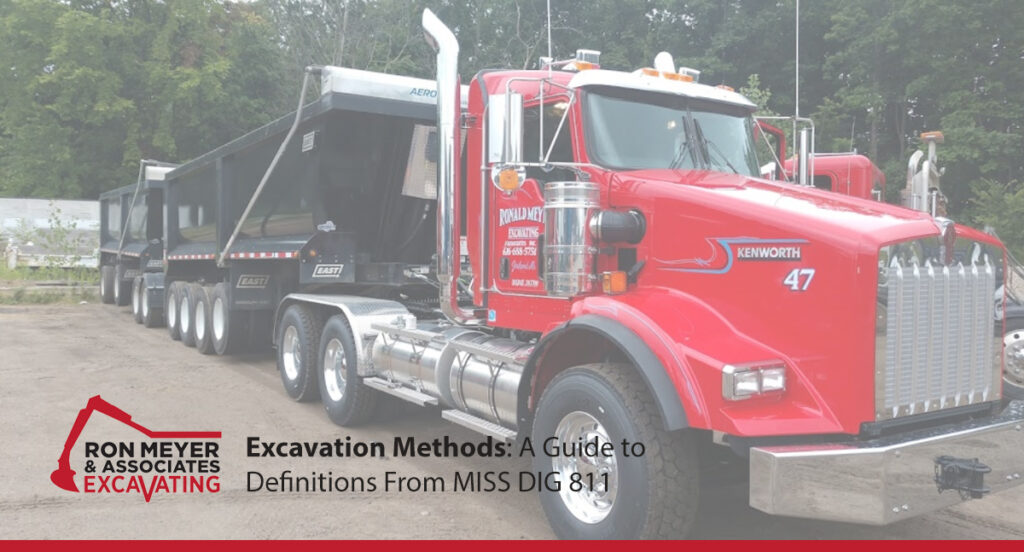
This guide provides a definition for each excavation method – as provided by MISS DIG 811 – a Michigan Non-Profit Corporation.
- Augering is using a rotating device to bore holes into hard surfaces such as concrete or the ground.
- Blasting is to blow up or break apart something solid with explosives.
- Drilling is a technique using equipment to drill holes in the earth to take samples or to insert pipes.
- Grading is a process that adjusts the slope and soil elevation around a construction site before building. It entails adding or removing earthen materials to create an even surface.
- Grinding is breaking objects into smaller pieces, such as a tree stump or concrete, or the process of smoothing rough concrete surfaces.
- Hand Digging is digging without using power tools e.g., shovel.
- Horizontal Boring is boring holes in a horizontal direction; used for the installation of gas, electric, water, and telecommunication lines underground, without the need for excavation, trenching, or cut-and-cover methods in congested urban environments.
- Machine Excavating is any machine, usually self-powered, that is used in digging or earth-moving operations of some kind e.g., bulldozer, backhoe, loader and grader.
- Mechanical Excavation is excavation using hydraulic hammers, saw-cutting or augering.
- Milling is grinding the top surface of the asphalt down approximately 2 inches to make room for a new layer of asphalt.
- Pile Driving is a device used to drive piles into soil to provide foundation support for buildings or other structures.
- Pulling In is moving (pulling) lengths of cable from one place to another.
- Reclaiming is the process of reconverting disturbed land to its former or other productive users; also using materials that have been previously used in a building or project, and which are then re-used in another project.
- Soft Excavation is the method and technique designed to prevent contact damage to underground facilities, including, but not limited to, hand-digging, cautious digging with nonmechanical tools, vacuum excavation methods, or use of pneumatic hand tools.
- Testing Boring is a process that provides the ability to collect samples of soil and rock at varying depths below the earth’s surface. Typically, a test boring is advanced by rotary drilling or driving casing into the ground.
- Saw Cut is used to create control joints in concrete, which help control where cracking occurs due to shrinkage. Used for preparation for removal of concrete, asphalt, or other surfaces as part of demolition or removal work.
- Trenching is a construction method that involves digging a narrow trench in the ground for the installation, maintenance, or inspection of pipelines, conduits, or cables.
- Vacuum Excavation is a non-destructive excavation method of utility detection. It is a potholing technique and is used to verify the location of a detected utility. Vacuum excavation is carried out by simultaneously shooting compressed air jets and removing excavated material by vacuum action.
At Ron Meyer & Associates Excavating, we’ve been providing underground and commercial construction to private and commercial businesses for 40+ years. As the general contractor or subcontractor, our experienced foremen, equipment operators, pipe layers, truck drivers and well-maintained equipment fleet make us an undeniable choice for your excavating services. Let’s talk about your project!

As 45 years of experience as an underground/site contactor and a third generation contractor, Ron takes time to go through each individual project with the supervisor and is responsible for all scheduling and equipment logistics. He’s also involved in all troubleshooting for projects.